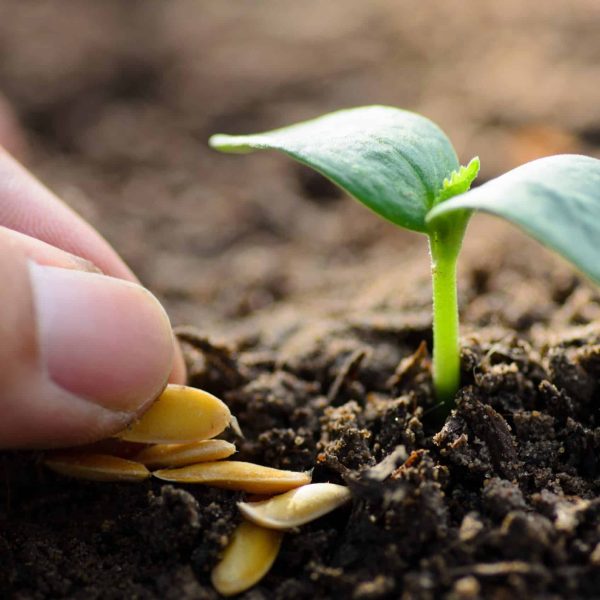-
How does it feel?
-
What can I use it for?
Saw palmetto is a valuable plant in the herbal medicine chest for men’s health, particularly for enlarged prostate and its associated urinary symptoms which links to its traditional uses.
Saw palmetto is used widely in the treatment of benign prostatic hyperplasia (BPH). BPH is a non-malignant progressive enlargement of the prostate gland, which tends to occur with age as the balance of sex hormones naturally changes.

BPH is common, and not usually symptomatic until past the age of 40. By the age of 60 around one third of men will experience symptoms of BPH, and by the age of 80 around half of men will experience symptoms.
Due to the proximity of the prostate gland to the bladder and urethra (the tube which carries urine from the bladder out of the body), symptoms of BPH include urinary issues such as frequent urination (especially at night), interrupted or reduced flow of urine, and incomplete emptying of the bladder which can lead to urine infections. Despite these symptoms impacting on quality of life, many patients with BPH prefer to ‘watch and wait’ with the condition (this is one allopathic treatment approach), rather than taking prescribed medications, since the medication often comes with side effects such as reduced libido and reduced sexual function, which many men would rather avoid and put up with the symptoms.
This is where saw palmetto comes into its own as a herbal treatment, since it has been demonstrated as an effective treatment in the management of BPH, helping to reduce the severity of urinary symptoms associated with the condition, therefore improving quality of life, and almost always without reports of side-effects.
Saw palmetto plays a potential role in another common men’s health concern of hair loss. This is thought to be due to its effect on levels of the androgen dihydrotestosterone (DHT) relative to declining testosterone levels. Hair follicles are sensitive to DHT, and when relative DHT levels rise it binds to the hair follicles leaving them prone to shrink and produce less hair in the phase of new hair growth which usually occurs after the old hair has naturally shed during the shedding phase of the hair cycle.
Saw palmetto inhibits the conversion of testosterone to DHT, therefore potentially helping to improve the quality of the hair follicles, in turn reducing the rate of hair loss, and possibly increasing the likelihood of new hair growth.
Saw palmetto can also be used in cases of prostatitis (inflammation of the prostate gland), and other inflammations of the genitourinary tract including cystitis (inflammation of the bladder), orchitis (inflammation of the testicles), and salpingitis (inflammation of the fallopian tubes). It has also been reported to be used in treatment of the atrophy of sexual organs including breasts and testicles, in male impotence, and to support male and female fertility.
-
Into the heart of saw palmetto

Saw palmetto (Serenoa repens) Saw palmetto has a long history of use as a plant medicine, by Native Americans of the Florida region of North America where the plant originates from it was given as a general tonic, and in cases of prostate problems.
Applying Ayurvedic principles, saw palmetto is also an all-round tonic herb, classifiable as three types of tonic: Bruhana karma (Nutritive tonic), Rasayana karma (Rejuvenative tonic), and Vajikarana (Aphrodisiac).
In Ayurveda nutritive tonics are usually sweet in taste, and heavy or oily, as is saw palmetto with its polysaccharide and high lipid content. They nourish the body, helping to increase weight, are demulcent (making them soothing for mucous membranes: saw palmetto in effect soothes and relieves inflammation in the genitourinary tract). They may also help to relieve muscle tensions, as does saw palmetto with its spasmolytic / spasm-relieving action.
Rejuvenative tonics are aimed at renewal of body and mind, to penetrate and revitalize the psycho-physiological being. They prevent decay and postpone ageing, improving the quality of the body’s tissues, to sustain optimal form and function of organs, which ties in with saw palmetto’s impact on the genitourinary system, and particularly its action in preserving the health of the prostate gland.
Aphrodisiacs, according to Ayurveda, give the power or vitality of a horse (particularly it’s great capacity for sexual activity). These types of tonics reinvigorate the body by reinvigorating the sexual organs. In the context of Ayurveda aphrodisiacs can work in two ways: acting to improve sexual vitality and function, by nurturing and giving sustenance to the sexual organs, and by directing sexual energy inwards, promoting creative transformation of sexual energy for regeneration and the benefit of body and mind.
Ayurvedic principles consider saw palmetto to be an aphrodisiac tonic with both qualities, which links to its use even in Western herbal medicine as a general anti-inflammatory for most organs in the genitourinary system, as a regenerative for atrophied sexual organs, for impotence, and fertility.
-
Traditional uses
 Saw palmetto has been used by Native Americans as a diuretic (to increase urinary output), for prostate problems, and as a general tonic.
Saw palmetto has been used by Native Americans as a diuretic (to increase urinary output), for prostate problems, and as a general tonic.Observations recorded by early US settlers and botanists noted that animals partial to eating the berries of saw palmetto were prone to become fat and sleek, and so perhaps it would also be beneficial for humans. Indigenous inhabitants of southern North America were using the plant medicinally long before European contact, making a water infusion for stomach aches and dysentery.
Other reported traditional uses included for respiratory inflammation, especially when accompanied by chronic catarrh. To reduce irritation and inflammation in genitourinary conditions, particularly with cystitis.
Saw palmetto has a long history of being used in prostatic hypertrophy (benign prostatic hyperplasia / BPH), with entries testifying to this use being found in many pharmacopoeias and the National Formulary during the early to mid-1900’s. It was rather aptly described as ‘old man’s friend’, as a remedy for prostatic irritation, attributed to relaxation of the tissue, which is accurately in-line with modern uses for BPH as an anti-inflammatory and spasmolytic (reducing spasms in the tissues).
Saw palmetto has also been used traditionally for atrophy of the sexual tissues, including the breast, ovaries and testes, and as an aphrodisiac.
-
Traditional actions
Herbal actions describe therapeutic changes that occur in the body in response to taking a herb. These actions are used to express how a herb physiologically influences cells, tissues, organs or systems. Clinical observations are traditionally what have defined these actions: an increase in urine output, diuretic; improved wound healing, vulnerary; or a reduction in fever, antipyretic. These descriptors too have become a means to group herbs by their effects on the body — herbs with a nervine action have become the nervines, herbs with a bitter action are the bitters. Recognising herbs as members of these groups provides a preliminary familiarity with their mechanisms from which to then develop an understanding of their affinities and nuance and discern their clinical significance.
-
Traditional energetic actions
Herbal energetics are the descriptions Herbalists have given to plants, mushrooms, lichens, foods, and some minerals based on the direct experience of how they taste, feel, and work in the body. All traditional health systems use these principles to explain how the environment we live in and absorb, impacts our health. Find out more about traditional energetic actions in our article “An introduction to herbal energetics“.
-
What practitioners say

Saw palmetto (Serenoa repens) Endocrine
Saw palmetto is effective in reducing androgen activity, which can be helpful in conditions where there is an imbalance in androgen levels as testosterone declines, and its stronger counterpart DHT is more prevalent, which can cause health issues that contribute to hair-loss and prostate overgrowth. In these cases, saw palmetto can be part of the treatment give to address the imbalance of androgens.
Reproductive
The prostate gland is involved in the production and ejaculation of the fluid which combines with sperm and is ejaculated during intercourse. The prostate gland becomes enlarged in a high proportion of men after the age of 40, which can present with urinary symptoms. Saw palmetto is a key herb in helping to manage BPH cases which present with symptoms such as urinary disturbances, for its antispasmodic action which helps to relieve muscle spasms of the prostate which may one factor contributing to these urinary symptoms.
With its affinity for the reproductive system saw palmetto is also helpful in cases of reproductive inflammation, such as the testicles (orchitis), fallopian tubes (salpingitis), and pelvic inflammatory disease (PID). However, many of these conditions can be due to underlying bacterial infections which may be the result of sexually transmitted infections (STI’s), and it would always important to seek the appropriate diagnostic testing to check for these conditions, and if diagnosed the relevant treatment, alongside herbal support for managing the symptoms of inflammation, since if left untreated many STI’s can lead to infertility. It is also illegal not to direct someone to STI treatment.
Respiratory (traditional uses)
Traditionally, saw palmetto has been given in cases of respiratory inflammation.
Urinary
Saw palmetto is a fantastic herb in helping to reduce inflammation in the urinary tract, and as such is wonderful in helping to manage the urinary symptoms associated with BPH and in easing inflammation in chronic prostatitis (inflammation of the prostate gland). It is also helpful in the treatment of cystitis.
-
Research
 Literature reviews found that a Hexanic Extract (HE) (a liposterolic extract) of Serenoa repens was effective at improving urinary symptoms, increasing urinary flow rate, and reducing prostate volume in men with BPH. It has also been found in real world studies to be effective as a 5α-reductase inhibitor and subsequently improving lower urinary tract symptoms (LUTS), and quality of life. European guidelines recommend HE Serenoa repens as a treatment option for men with LUTS who prefer to avoid side-effects linked with other medications (15).
Literature reviews found that a Hexanic Extract (HE) (a liposterolic extract) of Serenoa repens was effective at improving urinary symptoms, increasing urinary flow rate, and reducing prostate volume in men with BPH. It has also been found in real world studies to be effective as a 5α-reductase inhibitor and subsequently improving lower urinary tract symptoms (LUTS), and quality of life. European guidelines recommend HE Serenoa repens as a treatment option for men with LUTS who prefer to avoid side-effects linked with other medications (15).Another real-world non-interventional study of men with moderate to severe LUTS with BPH compared the change in symptoms, quality of life, and treatment tolerability in 353 men receiving tamsulosin (0.4mg / day of a medication used to treat BPH), and 384 men receiving HE of Serenoa repens (320mg / day) as monotherapy. The data was for a 6-month period and found improvements in quality of life and symptoms were scored almost equivalent in both groups. TAM patients reported significantly more adverse effects than HE patient (such as ejaculation dysfunction), showing that HESr is a valid treatment option for men with moderate to severe LUTS / BPH (16).
A double-blind, randomized, placebo-controlled trial was carried out to evaluate the efficacy and safety of Serenoa repens extract (SRE) for the treatment of chronic prostatitis/chronic pelvic pain syndrome (CP/CPPS). Between 2017 – 2018 a total of 221 patients were randomly assigned to receive SRE or placebo for a period of 12 weeks. The National Institutes of Health-Chronic Prostatitis Symptom Index (NIH-CPSI) was used as the primary efficacy endpoint, and results showed that compared to the placebo, SRE led to statistically significant improvements in the NIH-CPSI total score and sub-scores, which were established after 2 weeks from the first dose, and continued to the end of the treatment. These results are suggestive that SRE was effective, safe, and clinically superior to placebo for the treatment of CP/CPPS (17).
A study of 120 patients with mild to moderate LUTS induced by BPH who were treated over a 24-month period with a daily dose of 320 mg capsule of ethanolic extract of Serenoa repens, showed significant improvements in International Prostate Symptom Score (5.5 points), quality of life (QoL; 1.8 points), Q(max) (5.6 ml/s), and International Index of Erectile Function during the study period. These results suggest that long-term treatment with 320g of ethanolic extract of Serenoa repens is efficient in reducing urinary obstruction, improving symptomatology and QoL of BPH patients. It also had a positive effect on sexual function (18).
These studies support the use of both HE extract and ethanolic extracts of saw palmetto as a treatment for BPH, LUTS, CP/CPPS.

The most promising research on saw palmetto relates to a proprietary hexane liposterolic extract, rather than traditional formulations. This has indicated a general benefit in improving lower urinary tract symptoms (LUTS), including increased urinary flow rate and reduced prostate volume in men with benign prostatic hyperplasia (BPH).
There have however been a wide range of conclusions drawn about the efficacy of saw palmetto which in part reflect variations in formulations. For example a major 2006 US-government-funded double blind, randomised, placebo-controlled trial reported in the prestigious New England Journal of Medicine, found that among 225 men with BPH, 160 mg twice a day of liposterolic extract for 1 year had no benefits compared to placebo in terms of changes in maximal urinary flow rate, prostate size, residual volume or PSA levels (20). The researchers however used a US liposterolic extract rather than the standard European product, with for example different free fatty acid profile (21). This paper has however skewed the evidence base: for example the authoritative 2009 Cochrane review of saw palmetto included 5,222 patients from 30 randomised trials: meta-analysis of 9 trials for nocturia found saw palmetto was significantly better than placebo. However, when the 5 larger trials (740 patients – including the NEJM paper) were assessed a smaller improvement in nocturia was calculated that did not achieve significance. The conclusion in the 2012 Cochrane update was even more conclusive, that there was no benefit over placebo for LUTS in men with BPH (22).
However the most recent clinical reviews have been more promising. The hexane product has been shown in a 2022 systematic review of clinical trials to be effective as conventional 5α-reductase inhibitors in improving lower urinary tract symptoms (LUTS), and quality of life (15). This paper reinforced European guidelines that recommend the hexane extract as a treatment option for men with LUTS who prefer to avoid side-effects linked with other medications.
This review included a 2021 study of men with moderate to severe LUTS with BPH which compared the change in symptoms, quality of life, and treatment tolerability in 353 men receiving tamsulosin (0.4mg / day), and 384 men receiving the hexane extract (320mg / day). Over 6 months improvements in quality of life and symptoms were almost equivalent in both groups. Tamsulosin subjects reported significantly more adverse effects, such as ejaculation dysfunction, than saw palmetto subjects (23).
A separate double-blind, randomized, placebo-controlled trial was carried out to evaluate the efficacy and safety of the hexane extract for the treatment of chronic prostatitis/chronic pelvic pain syndrome. A total of 221 patients were randomly assigned to receive the extract or placebo for a period of 12 weeks. The National Institutes of Health-Chronic Prostatitis Symptom Index was used as the primary efficacy endpoint, and results showed that compared to the placebo, the extract led to statistically significant improvements after 2 weeks from the first dose, and continuing to the end of the treatment (24).
Although there are no specific modern research findings for non-proprietary saw palmetto extracts, practitioners and others may take support from this evidence, as it reinforces long-term traditional experience of simpler preparations.
-
Did you know?
Various parts of the saw palmetto plant have been used as a source of fibre, oil, wax, roof thatch, paper, and cork substitute.
The Seminole people of Florida use the fruit for food and the leaf stems to make medicine baskets.
Saw palmetto is an ecologically important plant. Due to its sprawling prostrate leaves it provides cover for various animals, including threatened species the Florida scrub jay and grasshopper sparrow.
The fruit provides food for white-tailed deer, foxes, gopher tortoises, black bears, and other animals. In addition, bees use the nectar to make honey. According to the Florida Farm Bureau, “widespread gathering of [saw palmetto] berries is depleting a wildlife food source and threatening the stability of some ecosystems.”
As such, saw palmetto has been added to the Florida Department of Agriculture and Consumer Services’ list of commercially exploited plant, meaning that since 2018 harvesters must have a Native Plant Harvesting Permit to harvest saw palmetto fruit on public or private land.
Additional information
-
Botanical description
The Latin name for saw palmetto is Serenoa repens, a plant widely used in men’s health, particularly for prostate conditions and the urinary symptoms which often accompany them.
A member of the Palmae / Arecaceae (palm) family it is native to the Atlantic Coast in the Southeastern region of North America, from South Carolina to Florida, and in Southern California.
It is the most common palm in the United States. A hardy perennial, usually growing as a shrub up to 2 – 7 feet tall in scrublands but can also flourish as a tree up to 25feet tall in upland habitats. The species name repens is Latin for creeping, due to its usually creeping horizontally growing branched stems.
The palmate leaves divide into lance-shaped linear-lanceolate leaflets, and a many-branched inflorescence with white flowers. The petiole (the part where the leaf and stem join) is edged with spiny teeth sharp enough to cut through persons coming into contact with it, which is where the common name Saw Palmetto derives from, literally meaning ‘small saw-like palm’.
The fruit is irregularly spherical and oblong in shape, growing to 16-25mm long and containing a single large hard brown seed. The ripe fruit is a deep brown-red-purple colour, and usually harvested between August – October. This ripe fruit (berry) is the part used medicinally, usually taken as a tincture, although a Hexanic Extract (HE) of the liposterolic compounds is also often given as a treatment for prostate conditions. A decoction can also be made with the dried berries.
-
Common names
- American dwarf palm tree
- Cabbage palm
- Sabal
- Sabal serrulate
- Old man’s friend
-
Safety
Adulteration of saw palmetto has been more prevalent in recent years, perhaps due to environmental factors affecting the harvest of the berries.
Adulterants include substitution with berries from other species of the palm family, production of the extract with unripe berries, and addition of or complete substitution with less expensive commercially-available food-based plant oils in a saw palmetto extract (7,8,9,10,11,12).
It is therefore important to buy from a reputable supplier with a traceable supply line so that the origin of the berries can be verified, and who carry out quality control testing if possible.
The most frequently reported adverse events in clinical trials with Serenoa repens have been minor gastrointestinal problems (e.g. nausea and abdominal pain) (13).
Caution with saw palmetto if taking warfarin (14).
-
Dosage
- 20 – 60ml / week (1:2 liquid)
- 2.2 – 3.2g / day (capsule)
-
Constituents
- Volatile oil (19)
- Fixed oil (19)
- Phytosterols (mainly beta-sitosterol) (14)
- Flavonoids (14,20)
- Polysaccharide (14,20,21)
Lipid Content:
- Free Fatty Acids (lauric, myristic and oleic acids) (14,19,20)
- Fatty Acid Esters (21)
- Triglycerides, diglycerides and monoglycerides (14,20,21)
- Phytosterols (mainly beta-sitosterol) (14,20)
- Fatty alcohols (20)
- Sterols(21)

-
References
- Gerber GS, Kuznetsov D, Johnson BC, Burstein JD. Randomized, double-blind, placebo-controlled trial of saw palmetto in men with lower urinary tract symptoms. Urology. 2001;58(6):960-965. doi:10.1016/s0090-4295(01)01442-x
- https://draxe.com/nutrition/saw-palmetto-benefits/ (accessed March 2022)
- Evron E, Juhasz M, Babadjouni A, Mesinkovska NA. Natural Hair Supplement: Friend or Foe? Saw Palmetto, a Systematic Review in Alopecia. Skin Appendage Disord. 2020;6(6):329-337. doi:10.1159/000509905
- Frawley D, Lad V. (1986). The Yoga of Herbs. Lotus Light Publications. Ed 2001. ISBN: 978-0-9415-2424-7
- Moerman, D.E. 1998. Native American Ethnobotany. Portland, OR: Timber Press, Inc. 527528.
- Valensa Adopts Saw Palmetto through ABC’s Adopt-an-Herb Program – American Botanical Council (herbalgram.org)
- AUSTIN, Texas (October 11, 2018) — The American Botanical Council (ABC) welcomes Valensa’s adoption of saw palmetto (Serenoa repens) through ABC’s Adopt-an-Herb botanical education program.
- Gafner S, Blumenthal M, Foster S, Cardellina II JH, Khan IA, Upton R. Botanical ingredient adulteration – How some suppliers attempt to fool commonly used analytical techniques. Acta Hort. 2018:in press.
- Mikaelian G, Sojka M. Authenticating saw palmetto extract : a new approach. Nutra Bus Technol. 2009;5:24-27.
- Perini M, Paolini M, Camin F, et al. Combined use of isotopic fingerprint and metabolomics analysis for the authentication of saw palmetto (Serenoa repens) extracts. Fitoterapia. 2018;127:15-19.
- Liva R, He X, Xiong L. Economically motivated adulteration. Integr Med. 2011;10(2):38-42.
- Gafner S. Evidence for adulteration of saw palmetto extracts. Botanical Adulterants Monitor. Vol 11. Austin, TX: ABC-AHP-NCNPR Botanical Adulterants Prevention Program; 2017.
- Saw palmetto adulteration found in six samples [press release]. Natural Products Insider: Informa USA2017.
- Plosker GL, Brogden RN. Serenoa repens (Permixon). A review of its pharmacology and therapeutic efficacy in benign prostatic hyperplasia. Drugs Aging. 1996;9(5):379-395. doi:10.2165/00002512-199609050-00008
- Blair HA. Hexanic Extract of Serenoa repens (Permixon®): A Review in Symptomatic Benign Prostatic Hyperplasia. Drugs Aging. 2022 Mar 3. doi: 10.1007/s40266-022-00924-3. Epub ahead of print. PMID: 35237936.
- Alcaraz A, Rodríguez-Antolín A, Carballido-Rodríguez J, et al. Efficacy and tolerability of the hexanic extract of Serenoa repens compared to tamsulosin in moderate-severe LUTS-BPH patients. Sci Rep. 2021;11(1):19401. Published 2021 Sep 29. doi:10.1038/s41598-021-98586-5
- Zhang K, Guo RQ, Chen SW, et al. The efficacy and safety of Serenoa repens extract for the treatment of patients with chronic prostatitis/chronic pelvic pain syndrome: a multicenter, randomized, double-blind, placebo-controlled trial. World J Urol. 2021;39(9):3489-3495. doi:10.1007/s00345-020-03577-2
- Sinescu I, Geavlete P, Multescu R, et al. Long-term efficacy of Serenoa repens treatment in patients with mild and moderate symptomatic benign prostatic hyperplasia. Urol Int. 2011;86(3):284-289. doi:10.1159/000322645
- Grieve M (1931) A Modern Herbal. Tiger press. Ed 1994. ISBN 1-85501-249-9
- Mills S, Bone K. 2000. Principles and Practice of Phytotherapy. Churchill Livingstone. Elselvier Health. ISBN: 0 443 06016 9
- Gafner, S., 2019. Saw Palmetto Extract Laboratory Guidance Document. [ebook] Austin: American Botanical Council. Available at: <http://cms.herbalgram.org/BAP/LGD/BAPP-LGDs-sawpalmetto-CC2020-V1-FINAL.pdf> [Accessed 10 March 2022].
- Bent S, Kane C, Shinohara K, et al. (2006) Saw palmetto for benign prostatic hyperplasia. N Engl J Med. 354(6): 557-66. doi: 10.1056/NEJMoa053085.
- Bone K, Mills S (2013) Principles and Practice of Phytotherapy. Churchill Livingstone/Elsevier: 811
- Tacklind J, Macdonald R, Rutks I, et al. (2012) Serenoa repens for benign prostatic hyperplasia. Cochrane Database Syst Rev. 12(12):CD001423. doi: 10.1002/14651858.CD001423.pub3.
- Blair HA. (2022) Hexanic Extract of Serenoa repens (Permixon®): A Review in Symptomatic Benign Prostatic Hyperplasia. Drugs Aging. 39(3):235-243 doi: 10.1007/s40266-022-00924-3
- Alcaraz A, Rodríguez-Antolín A, Carballido-Rodríguez J, et al. (2021) Efficacy and tolerability of the hexanic extract of Serenoa repens compared to tamsulosin in moderate-severe LUTS-BPH patients. Sci Rep. 11(1): 19401. doi: 10.1038/s41598-021-98586-5.
- Zhang K, Guo RQ, Chen SW, et al. (2021) The efficacy and safety of Serenoa repens extract for the treatment of patients with chronic prostatitis/chronic pelvic pain syndrome: a multicenter, randomized, double-blind, placebo-controlled trial. World J Urol. 39(9): 3489-3495. doi: 10.1007/s00345-020-03577-2

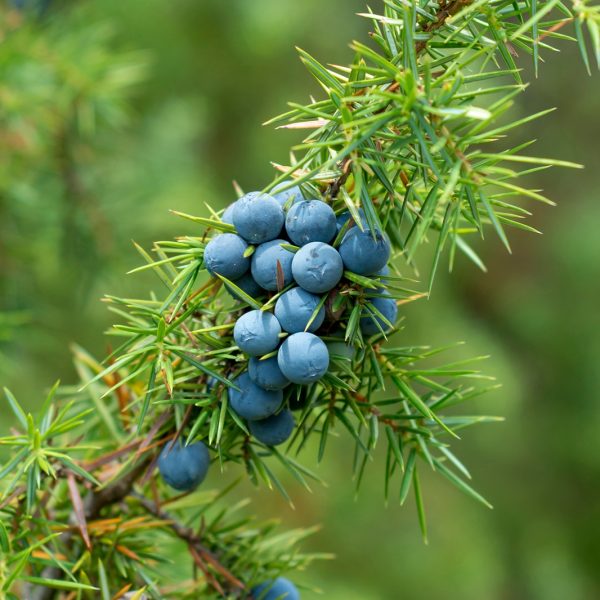













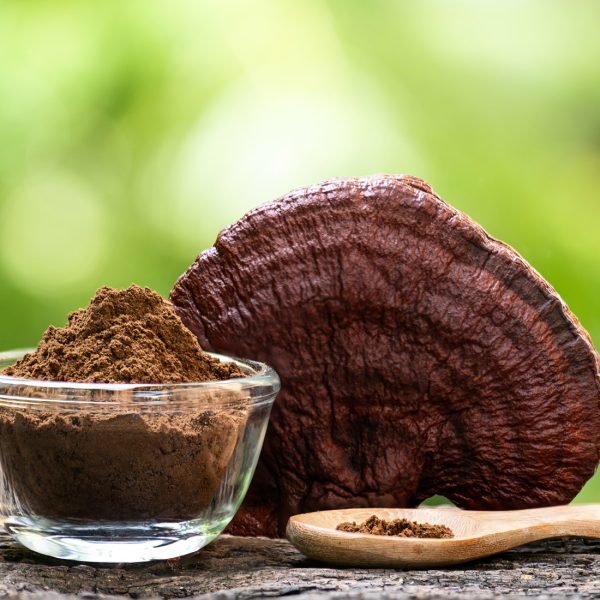

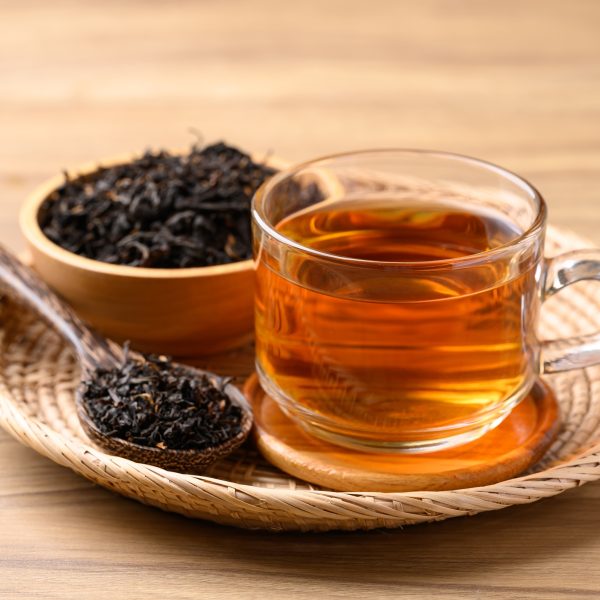
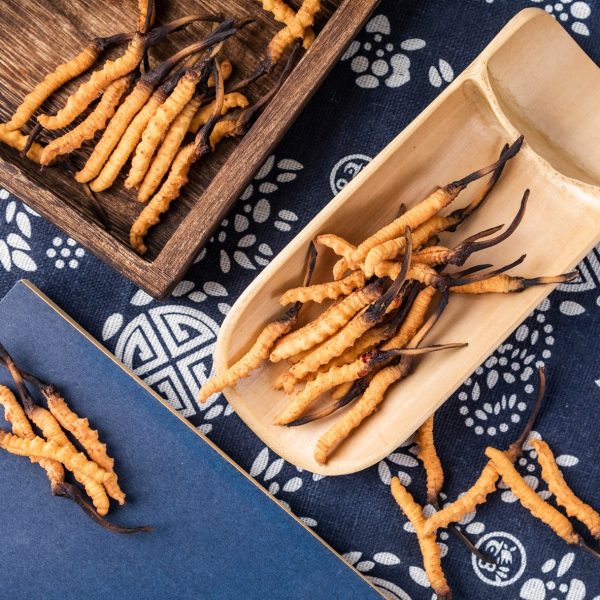












 Saw palmetto has been used by Native Americans as a diuretic (to increase urinary output), for prostate problems, and as a general tonic.
Saw palmetto has been used by Native Americans as a diuretic (to increase urinary output), for prostate problems, and as a general tonic.
 Literature reviews found that a Hexanic Extract (HE) (a liposterolic extract) of Serenoa repens was effective at improving urinary symptoms, increasing urinary flow rate, and reducing prostate volume in men with BPH. It has also been found in real world studies to be effective as a 5α-reductase inhibitor and subsequently improving lower urinary tract symptoms (LUTS), and quality of life. European guidelines recommend HE Serenoa repens as a treatment option for men with LUTS who prefer to avoid side-effects linked with other medications (15).
Literature reviews found that a Hexanic Extract (HE) (a liposterolic extract) of Serenoa repens was effective at improving urinary symptoms, increasing urinary flow rate, and reducing prostate volume in men with BPH. It has also been found in real world studies to be effective as a 5α-reductase inhibitor and subsequently improving lower urinary tract symptoms (LUTS), and quality of life. European guidelines recommend HE Serenoa repens as a treatment option for men with LUTS who prefer to avoid side-effects linked with other medications (15).




